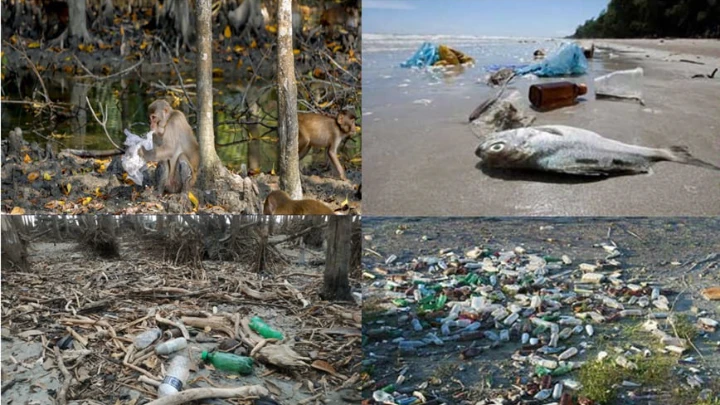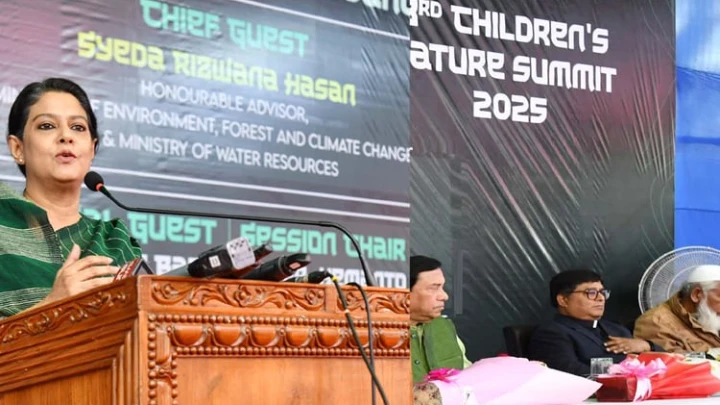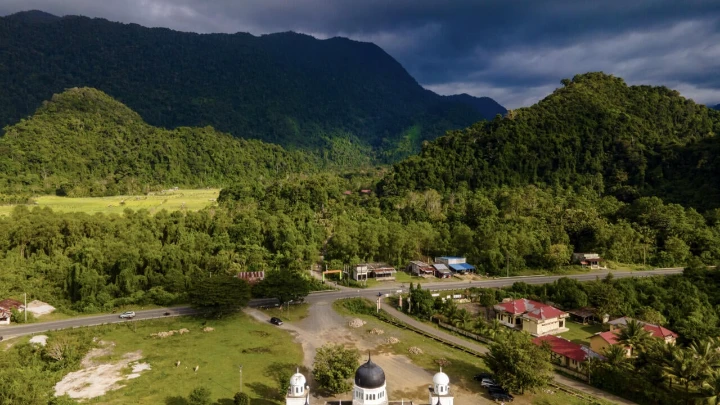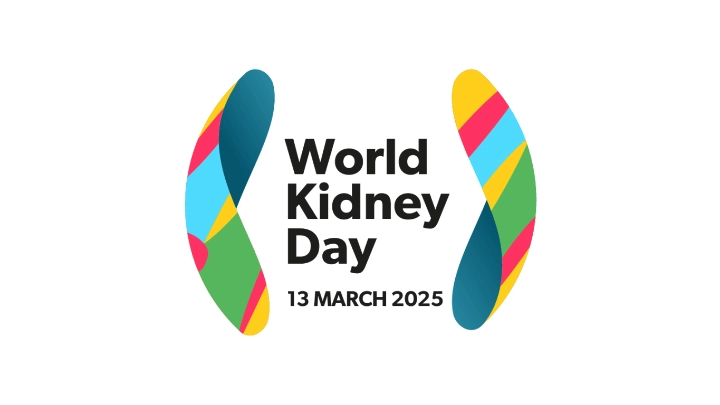BRAC’s climate-resilient house (CRH) is specially designed for vulnerable populations to respond to climate-induced disaster and long-term changes resulting from climate change
Reducing climate vulnerability by building climate-resilient housing in coastal areas
Shadma Malik & Sinchita Poddar, TBS || Shining BD
The day before Cyclone Sidr hit in 2007, Prova Mridha, 46, was preparing dinner for her family.
It was evening when she heard a voice over the loudspeaker, urging everyone to evacuate their homes immediately due to a major cyclone signal.
She soon packed the meal in a tiffin box to have it later at the cyclone shelter and left home with her husband and son, leaving behind her livestock in the compound.
On that day, the nearby school turned into a cyclone shelter for the coastal community, as the main shelter was 1.5 miles away from her residence, Prova said.
She recollected the night spent in the cyclone shelter by saying, "It was crowded with people of all ages, from the elderly to children."
She mentioned everyone spending the day hearing the powerful sound of wind. "It was frightening," she said.
When morning appeared, she returned from the cyclone shelter, and saw her compound was filled with uprooted trees and the pond was filled with dead leaves and water was contaminated too.
Prova's small house was partially damaged. She collected a few ropes and fixed the hay rooftop. But as days passed, the house began to lean, on the brink of collapse.
With limited resources, she built another small house on the same land near the Mongla River, hoping it would sustain her family.
However, frequent and intense rainfall made the house fragile and nearly impossible to live in.
Cyclones and storm surges, driven by climate change, have greatly affected Prova's life, making it increasingly difficult for her to have access to gas or firewood for cooking as well as safe drinking water.
In Mongla, an area prone to saline intrusion, the situation becomes worse during storm surges and floods as the water level rises and the salinity increases, making it challenging to get clean water.
Prova has been living in Mongla Upazila for the last 30 years. Her husband is a day labourer. She tries to contribute to the family's meagre income by selling livestock.
With the family often facing economic loss, she said, "During floods, water rises to the knee level. We're forced to seek shelter in a distant cyclone shelter or rely on neighbours who have 'paka bari' (brick houses)."
The coastal areas of Bangladesh are susceptible to climate change due to their low-lying nature and proximity to the Bay of Bengal.
Rising sea levels and exposure to frequent and intense cyclones result in storm surges, flooding, and infrastructure damage, consequently risking livelihoods and wellbeing of the coastal communities.
A climate-resilient house (CRH) is specially designed for vulnerable populations to respond to climate-induced disaster and long-term changes resulting from climate change.
These houses are capable of withstanding climatic shocks without deformation. Through careful architectural planning and construction practices, resilient housing under the NDC Action Project can be seen in disaster-prone areas where the communities are most at risk of losing their homes.
Under the Nationally Determined Contribution (NDC) Action Project, two climate-resilient houses are located in Mongla Upazila of Bagerhat and Moheshkhali of Cox's Bazar to tackle extreme climate shocks.
Recognising the vulnerability faced by many locals like Prova, BRAC supported her by constructing a new two-storey, red-brick home to provide her with a sense of security.
She now expresses relief, knowing that her family will be safe even during cyclones.
The Ministry of Environment, Forest and Climate Change (MoEFCC) is the country focal point for the NDC Action Project.
Dr Farhina Ahmed, Secretary of MoEFCC, said, "In the COP 28 conference, the government demonstrated and displayed the climate resilient housing model, developed by BRAC in the pavilion of Bangladesh and it was praised and attracted a lot of attention from the participants of the conference."
"Furthermore, the Bangladesh government has accepted the model and we believe that we will be building such climate-resilient housing through different projects and we also have the plan to roll it out across the coastal belt and popularise it among people," she said.
"We can encourage private sector participation to engage in the initiative so that people can adopt climate resilient housing, by providing them loans and through other ways," she added.
BRAC, as the implementing partner of the Nationally Determined Contributions (NDCs) or NDCs Action Project in Bangladesh, is providing technical expertise and knowledge to identify policies, investments, and financial solutions and build capacities as adaptation in coastal areas in Bangladesh, said Md Liakath Ali, PhD, Director of BRAC's Climate Change Programme (CCP), Urban Development Programme (UDP), and Disaster Risk Management Programme (DRMP).
Talking about the myriad benefits of climate-resilient housing, he said, "The resilient house features separate rooms for women and children to take shelter during cyclones. The ground floor can accommodate livestock and there's no need to travel long distances or leave anything behind."
The owner of the house will volunteer to accommodate neighbouring families or relatives during such events. The housing can accommodate a maximum of 45 people, and it is safe and secured as everyone knows each other, he added.
Considering the height of the storm associated with the history of cyclones along with the sea level rise, the resilient housing has been designed with an elevated plinth.
Md Liakath Ali added that as climate impacts continue to accelerate, we need to focus on scaling up climate-resilient housing in coastal regions. The housing can be built much more quickly and it is cost-effective.
Addressing private sector engagement, Chowdhury Liakat Ali of the Sustainable Finance Department (SFD) of Bangladesh Bank said that Bangladesh Bank has initiated a refinancing scheme for green and sustainable products along with climate resilience housings, and green establishments like green building, green factory, and green initiatives.
He added, Bangladesh Bank has incorporated climate resilience housings for the climate-vulnerable communities, especially in the coastal regions, in the scheme. So, we believe it will facilitate easier access to finance for the vulnerable communities in Bangladesh.
BRAC Bank invests 10% of its CSR Budget in the Climate Risk Mitigation and Adaptation Programme. The bank has been prioritising long-term programmes that have a sustainable and lasting impact on the people and society.
Shedding light on the well-being of the vulnerable people and society of the country, Md Sabbir Hossain, Deputy Managing Director (DMD) and Chief Executive Officer (CEO) of BRAC Bank, said, "The climate resilient housing is a very innovative structure and if done at a low cost, there is nothing like it. Scaling this climate resilient housing can be a holistic solution in cyclone- and flood-prone areas in Bangladesh, which can yield fruitful results as well."
The resilient house supports the communities including women-headed households and families with disabled, school-going, adolescent, and senior members.
The recipients of the house will volunteer to accommodate 5-10 neighbouring families or relatives during climatic disasters.
Dr Myung Kyun Lee, Institutional Head of United Nations Framework Convention on Climate Change (UNFCCC), said "Cost-effective, resilient housing safeguards against flood and cyclone damage, ensuring stability for vulnerable communities."
BRAC's Climate Resilient Housing model has won the Global Challenge 2022 Award given by the Aga Khan Agency for Habitat in the housing category due to its impactful, inclusive, and sustainable architectural design.
The MoEFCC and BRAC, the Adaptation NTI, participated in the UN session of the Asia Pacific Adaptation Network (APAN) Forum in Incheon, Korea from 28 August to 01 September 2023 and showcased the Climate Resilient Housing concept, which brought significant appreciation from the diverse audience, comprising representatives from various organisations and nations.
As climate impacts continue to accelerate, cyclone shelters need to focus on tackling the impacts of climate vulnerability. So, fostering resilience and improved living conditions for the most vulnerable climate survivors is a must.
Shining BD
























